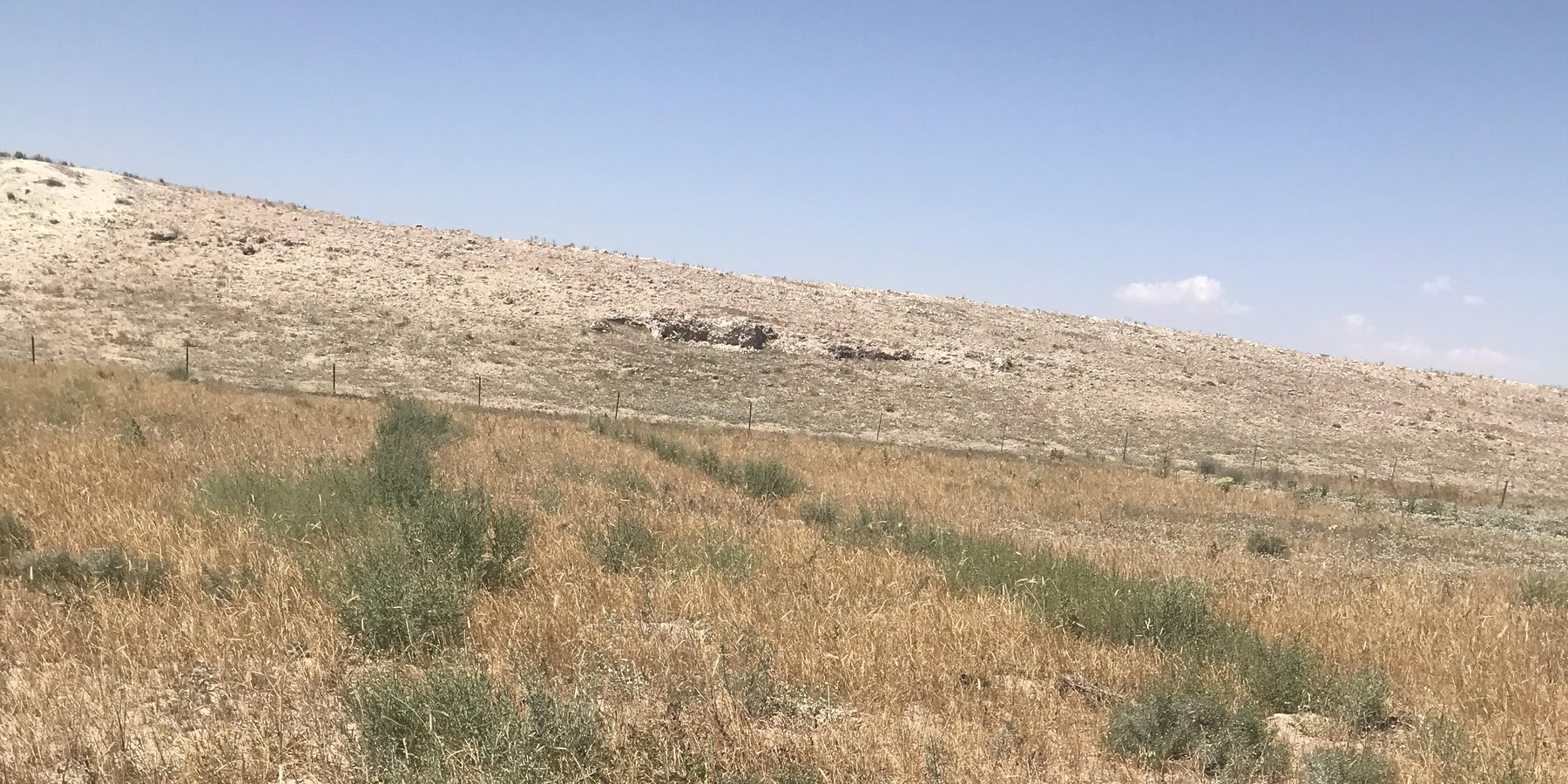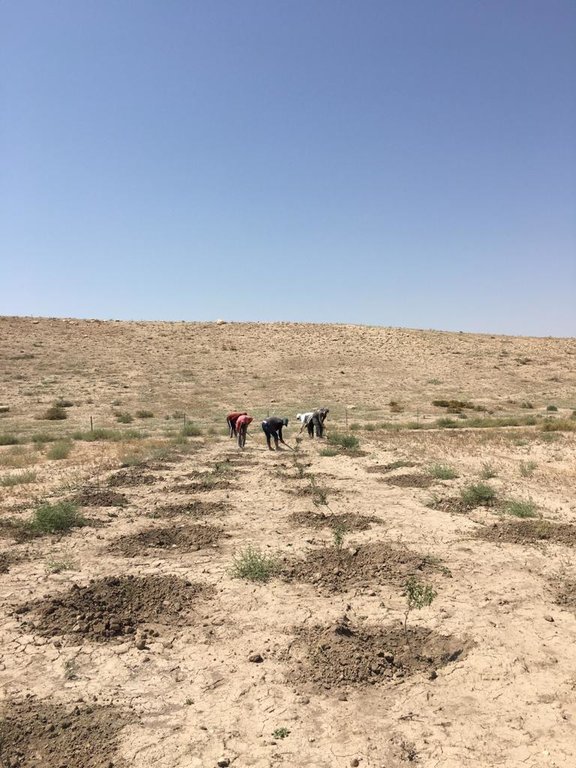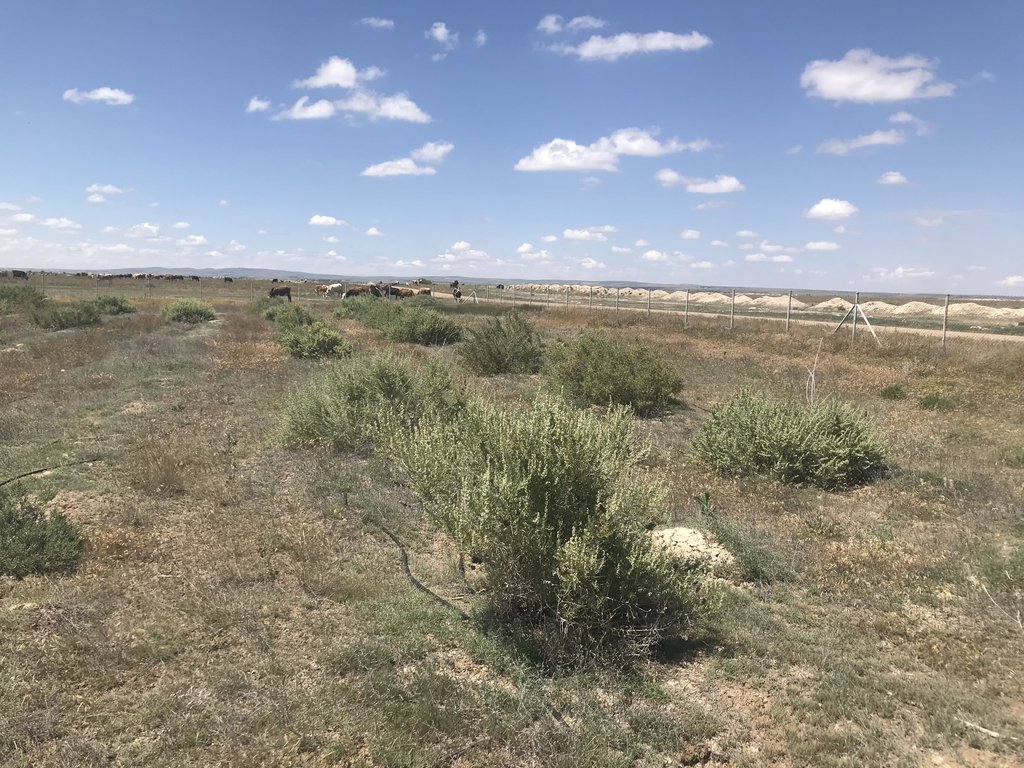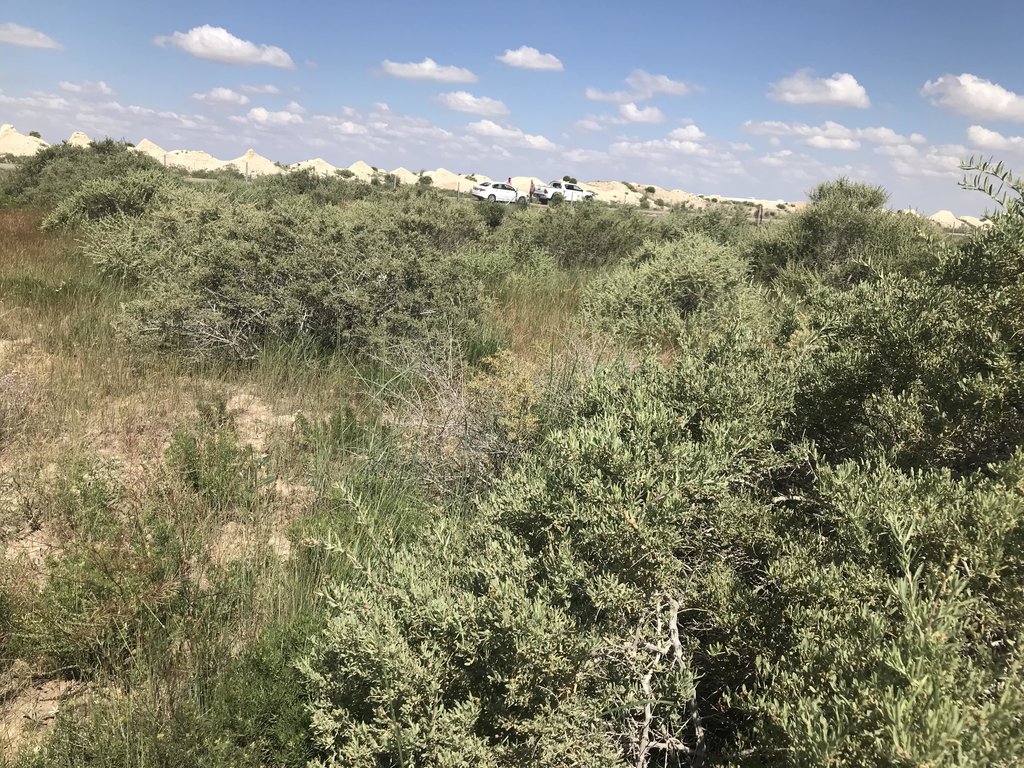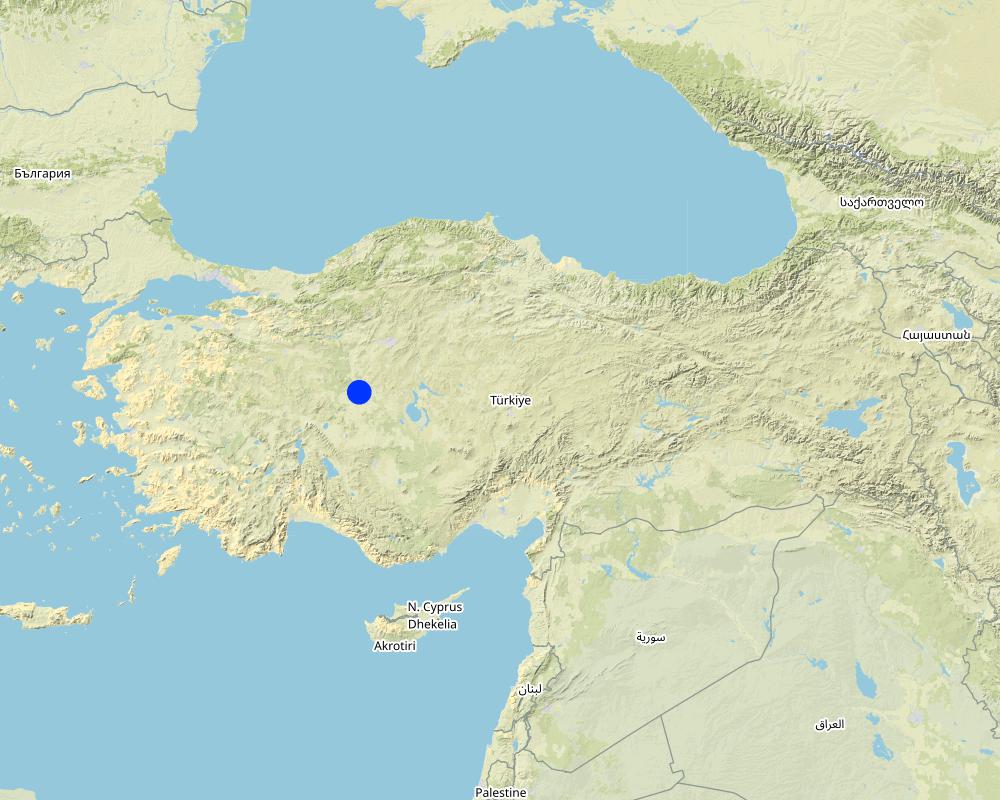Sustainable pasture improvement in the arid and semiarid lands of Turkiye [Turquía]
- Creación:
- Actualización:
- Compilador: Bilgi Sarihan
- Editor: –
- Revisores: William Critchley, Rima Mekdaschi Studer
approaches_6321 - Turquía
Visualizar secciones
Expandir todo Colapsar todos1. Información general
1.2 Detalles de contacto de las personas de referencia e instituciones involucradas en la evaluación y la documentación del Enfoque
Nombre de la(s) institución(es) que facilitaron la documentación/ evaluación del Enfoque si fuera relevante)
General Directorate Combating Desertification and Erosion (General Directorate Combating Desertification and Erosion) - Turquía1.3 Condiciones referidas al uso de datos documentados mediante WOCAT
¿Cuándo se compilaron los datos (en el campo)?
26/06/2021
El compilador y la/s persona(s) de referencia claves aceptan las condiciones acerca del uso de los datos documentados mediante WOCAT :
Sí
2. Descripción del Enfoque MST
2.1 Breve descripción del Enfoque
Natural pastures have insufficient capacity to produce forage in the semi-arid rangelands of Central Anatolian Region. Therefore, a project has been initiated to plant forage shrubs which are drought and salinity tolerant in order to rehabilitate these pasturelands.
2.2 Descripción detallada del Enfoque MST
Descripción detallada del Enfoque MST:
Approximately 65% of Turkiye’s surface area (78 million hectares in total) consists of arid and semiarid areas, and this is where most of the pasturelands are located. These areas are deprived of vegetation and under threat of wind erosion. In addition, salinity is a serious problem on approximately 2 million hectares. In recent years, the General Directorate of Combating Desertification and Erosion has been implementing projects to improve pasture quality in arid and salty areas by planting adapted shrubs. Natural pastures have insufficient capacity to produce forage sustainably. Droughts, which are increasingly felt with global warming and climate change, have further limited forage production, especially in Central Anatolian Region’s rangelands. A project was initiated in the dry, nutrient-poor and heavy soils land within the borders of Kırsehir (Malya) and Ankara (Polatli) Agricultural Operations Directorate. Forage shrubs and herbaceous plants which are resistant to drought and overgrazing were selected: namely Atriplex canescens, Kochia prostrata, Agropyron elongatum and Agropyron intermedium. Atriplex canescens is, in particular, drought tolerant and rapidly increases the yield of animal feed in degraded pastures. No chemical fertilizer was applied to this species, which was given limited water only for the first two years after planting. Despite this, the plants grew successfully. It is thought that the continuity of the pasture established in this approach is possible in most of the arid areas. The management of the improved field will be provided by planned grazing. One year, part of the pasture will be opened for grazing in one season, while other parts will be opened for grazing in the second year. In this way, land degradation of the area will be prevented. One of the primary goals of this project is to contribute to the improvement of degraded pasture's biomass productivity. The project also support efforts to prevent wind erosion. Under the project, adaptation to drought, growth and biomass of the planted and cultivated species are monitored, and their contribution to the regional livestock's feed source capacity and soil fertility are recorded. Above all, the approach will help to provide sustainable land improvement, especially where livestock keepers face challenges with drought.
2.3 Fotos del Enfoque
2.5 País/ región/ lugares donde el Enfoque fue aplicado
País:
Turquía
Región/ Estado/ Provincia:
The Central Anatolian Region
Map
×2.6 Fechas de inicio y conclusión del Enfoque
Si no se conoce el año preciso, indique la fecha aproximada en la que se inició el Enfoque:
hace menos de 10 años (recientemente)
2.7 Tipo de Enfoque
- proyecto/ basado en un programa
2.8 Propósitos/ objetivos principales del Enfoque
To summarize the objectives of the aproach:
- Creating wind protection strips by planting shrub species - that are adaptable to wind erosion, drought and barrenness, to protect the soil surface from wind erosion,
- Growing shrubs and herbaceous forage crops in the field in order to reduce the scarcity of feed resources in arid and semi-arid lands,
- Increase the income of the rural population from livestock keeping,
- Improve the soil health and soil physical quality in terms of providing important ecosystem services,
- Contribute to the transformation of arid and semi-arid areas into Carbon Sink Areas,
- Serve the objectives of Land Degradation Neutrality,
2.9 Condiciones que facilitan o impiden la implementación de la/s Tecnología/s aplicadas bajo el Enfoque
colaboración/ coordinación de actores
- facilitan
General Directorate Combating desertification and erosion collaborate with the General Directorate of Agricultural Operations and its all local departments. General Directorate Combating desertification and erosion also has collboration with the livestock keepers.
marco de trabajo legal (tenencia de tierra, derechos de uso de tierra y agua)
- facilitan
The land ownership regime has helped the approach implementation. Project areas belong to state, so applying the project isn't a problem.
políticas
- facilitan
Pasture laws support sustainable pasture management.
conocimiento de MST, acceso a apoyo técnico
- facilitan
The project includes technical support of the General Directorate Combating desertification and erosion
carga de trabajo, disponibilidad de mano de obra
- facilitan
People who live in rural areas understand the importance of the pasture rehabilitation in terms of livestock, so they contribute with manpower.
3. Participación y roles de las partes interesadas involucradas
3.1 Partes interesadas involucradas en el Enfoque y sus roles
- usuarios locales de tierras/ comunidades locales
Local land users, rural population
Local land users provide technical support
- especialistas MST/consejeros agrícolas
3.2 Involucramiento de los usuarios locales de tierras/ comunidades locales en las distintas fases del Enfoque
| Involucramiento de los usuarios locales de tierras/ comunidades locales | Especifique quién se involucró y describa las actividades | |
|---|---|---|
| iniciación/ motivación | interactivo | Meetings, seminars and others with the local land users |
| planificación | interactivo | Local land users (rural population) are included in the process of planning |
| implementación | interactivo | |
| monitoreo y evaluación | interactivo |
3.4 La toma de decisiones en la selección de Tecnología(s) MST
Especifique quién decidió la selección de las Tecnología/ Tecnologías a implementarse:
- principalmente por especialistas MST en consulta con usuarios de tierras
Especifique las bases que sustentaron la toma de decisiones:
- la evaluación de conocimiento MST bien documentado (la toma de decisiones se basa en evidencia)
4. Apoyo técnico, fortalecimiento institucional y gestión del conocimiento
4.1 Construcción de capacidades / capacitación
¿Se proporcionó la capacitación a usuarios de tierras/ otras partes interesadas?
Sí
Especifique quién fue capacitado:
- usuarios de tierras
- personal de campo/ consejeros
Forma de capacitación:
- en el contexto de trabajo
- reuniones públicas
Temas avanzados:
The Characteristics of Dry Land Ecology, Deficit Irrigation on Plants, Pasturelands in Arid and Semiarid Lands, improvement of biomass for livestock in pasture areas where located in dry lands...
4.2 Servicio de asesoría
¿Los usuarios de tierras tienen acceso a un servicio de asesoría?
No
4.3 Fortalecimiento institucional (desarrollo institucional)
¿Se establecieron o fortalecieron instituciones mediante el Enfoque?
- sí, moderadamente
Especifique el nivel o los niveles en los que se fortalecieron o establecieron las instituciones:
- nacional
4.4 Monitoreo y evaluación
¿El monitoreo y la evaluación forman parte del Enfoque?
Sí
Comentarios:
The yields of forage plants are measured annually. Physical measurements (forage yield, forage quality, grazing capacity, soil quality) together with field photographs are used for measurement and evaluation. Sampling and measuring works are done by engineers. The evaluation part is discussed by the experts.
Si respondió que sí, ¿la documentación se utilizará para monitoreo y evaluación?
Sí
Comentarios:
All documentation made on the field will be used for monitoring and evaluation. According to the results obtained, our study will be expanded to other arid areas.
4.5 Investigación
¿La investigación formó parte del Enfoque?
Sí
Especifique los temas:
- ecología
Proporcione detalles adicionales e indique quién hizo la investigación:
The General Directorate of Combating Desertification and Erosion and Agricultural Enterprises carry out the research together. In addition, the faculties of agriculture of the relevant universities are included in the research. It is thought that the research will contribute to both other agricultural workers and the next generation of scientists.
5. Financiamiento y apoyo material externo
5.1 Presupuesto anual para el componente MST del Enfoque
Si no se conoce el presupuesto anual preciso, indique el rango:
- 10,000-100,000
5.2 Apoyo financiero/material proporcionado a los usuarios de tierras
¿Los usuarios de tierras recibieron financiamiento/ apoyo material para implementar la Tecnología/ Tecnologías? :
No
5.4 Crédito
¿Se proporcionó crédito bajo el Enfoque para actividades MST?
No
5.5 Otros incentivos o instrumentos
¿Se usaron otros incentivos o instrumentos para promover la implementación de Tecnologías MST?
No
6. Análisis de impacto y comentarios de conclusión
6.1 Impactos del Enfoque
¿El Enfoque ayudó a los usuarios de tierras a implementar y mantener Tecnologías MST?
- No
- Sí, un poco
- Sí, moderadamente
- Sí, mucho
Pasture improvement through planting the drought tolerant shrubs is understood by land users.
6.2 Motivación principal del usuario de la tierra para implementar MST
- producción incrementada
- incremento de la renta(bilidad), proporción mejorada de costo-beneficio
- reducción de la degradación de la tierra
- reducción del riesgo de desastres naturales
- conciencia medioambiental
- conocimiento y capacidades mejorados de MST
6.3 Sostenibilidad de las actividades del Enfoque
¿Pueden los usuarios de tierras sostener lo que se implementó mediante el Enfoque (sin apoyo externo)?
- incierto
Si respondió no o incierto, especifique y comente:
Since land users are new to this type of study, they may not be able to implement this study alone at this time. However, in the next few years, land users will also have the knowledge and skills to practice on their own. For example, controlled grazing is required for the plants in the pasture area to maintain their development. The studies, which started with understanding the importance of controlled grazing and the characteristics of arid areas, will continue with plant production and application works.
6.4 Fortalezas/ ventajas del Enfoque
| Fuerzas/ ventajas/ oportunidades desde la perspectiva del usuario de la tierra |
|---|
| Land users consider the approach applied to be very beneficial and sustainable. The first reason is that the applied species can grow in extreme droughts because their water requirements are very low. The second reason is that the applied plants can be used as animal feed. |
6.5 Debilidades/ desventajas del Enfoque y formas de sobreponerse a ellos
| Debilidades/ desventajas/ riesgos desde la perspectiva del usuario de la tierra | ¿Cómo sobreponerse a ellas? |
|---|---|
| Although land users consider the approach to be very beneficial and sustainable, they suspect that shepherds will deviate from the proposed grazing plan. Another issue is that the lands are generally hard to reach and as a result of sudden changes in climatic conditions, it is thought that the plants may not stay in the area for many years. |
7. Referencias y vínculos
7.2 Referencias a publicaciones disponibles
Título, autor, año, ISBN:
Bilgi Sarihan (bilgi.sarihan@csb.gov.tr)
7.3 Vínculos a la información relevante disponible en línea
URL:
https://qcat.wocat.net/en/wocat/approaches/edit/approaches_6321/app__7/
Vínculos y módulos
Expandir todo Colapsar todosVínculos
No hay vínculos
Módulos
No se hallaron módulos


